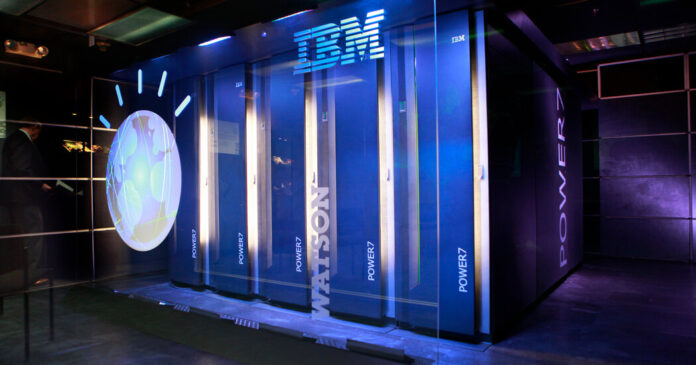There is no shortage of excitement in corporate America for the new artificial intelligence that can produce everything from business reports to computer code with humanlike fluency.
Plenty of companies are experimenting with the technology, called generative A.I., but they are worried about how confidential data will be handled, the accuracy of A.I.-generated answers and potential legal liability.
IBM on Thursday announced its campaign to ease customers’ qualms. The company said it would indemnify companies against copyright or other intellectual property claims for using its generative A.I. systems. IBM will also publish its data sets — the underlying data that is used to build or “train” the A.I. system — which is not standard practice among commercial providers of generative A.I. technology.
The announcement is an indication that, while attention has been focused on the new A.I. technology in chatbots like OpenAI’s ChatGPT, IBM is laying its plans to tackle the market.
IBM’s customers are mostly other businesses, and persuading those companies to use new A.I. products means assuring them that they won’t run into legal trouble. OpenAI, for example, has already been sued by a collection of authors who accuse it of infringing on their copyrights by using their books to train ChatGPT.
Over the last year, start-ups like OpenAI and other industry giants like Google and Microsoft have been much more aggressive than IBM about publicly discussing their A.I. work. Even Meta, the parent company of Facebook, this week introduced A.I. chatbots meant to sound like celebrities such as the quarterback Tom Brady and the hip-hop artist Snoop Dogg.
IBM’s relatively quiet stance showed how much the tech industry had changed in the 12 years since IBM’s Watson A.I. system beat top competitors on “Jeopardy!” A.I. became a centerpiece of IBM’s pitch to corporate customers, but the company has been overshadowed by younger competitors in the nearly yearlong A.I. frenzy in the tech industry.
Other technology suppliers are also trying to reassure customers by assuming legal risks. Microsoft pledged this month to defend customers in any copyright suits that arise from using its A.I.-powered Copilots, which it is adding to its office productivity software and programming tools. Adobe has made a similar commitment for copyright claims against customers using Adobe Firefly, its A.I. art-generation software.
The IBM A.I. systems — or “models,” as developers call them — are tailored for use by businesses. And the training data has been curated with companies in mind and culled from the internet, academic journals, computer code repositories, and legal and finance documents, the company said.
IBM appears to be going further than other companies in taking on risk and opening up its model-training data. But it is in step with where the business market for generative A.I. is heading, said Patrick Moorhead, chief executive of Moor Insights & Strategy, a technology analysis firm.
The big A.I.-fueled consumer services like ChatGPT and Google’s Bard are closed, and people outside the companies behind them cannot usually see what data those systems are built on. That will not satisfy most corporate customers, Mr. Moorhead said.
“Businesses need to know the data inputs and get a sense of why you got the answer you did,” he said. “Putting their customer or confidential data into an A.I. model is seen as high risk for a business.”
IBM is positioning itself as a partner for companies that want to create their own A.I. technology, by adding their business data to IBM’s open models.
The early focus of most business technology companies, including Microsoft, Oracle, Salesforce and SAP, has largely been on embedding generative A.I. to improve their existing digital tools for office productivity, supply chain management, customer service and marketing.
IBM will deploy that A.I. in its products as well, but its emphasis is helping businesses become creators, as well as customers, of generative A.I. technology.
In business, the A.I. models are large, but far smaller than needed for the big consumer chatbots, said Rob Thomas, IBM’s senior vice president for software. The narrower focus also helps improve accuracy. “And for our market, accuracy is way more important than size,” he said.
The smaller models also require far less computing firepower than the giant consumer chatbots. That, Mr. Thomas said, should open the door to wider use of generative A.I. in operations that promise an immediate impact and payoff, including customer service, automated back-office tasks and digital assistants for writing code.
In those fields, “we see a defensible return on investment at the moment,” Mr. Thomas said. “The economics work.”



